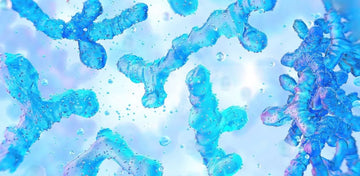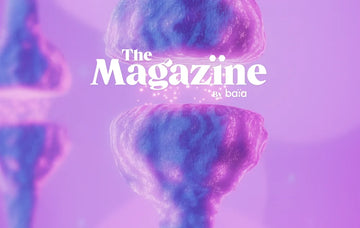Tabla de contenidos
Keys to restoring the balance of the microbiota in a healthy way natural.
The gut microbiota is a fascinating and complex ecosystem, populated by trillions of microorganisms that play a crucial role in digestion, metabolism, and immune system regulation. Its balance not only impacts the Gut health, but also systemic processes as broad as the production of neurotransmitters, modulation of the autonomic nervous system and the inflammatory response.
For a microbiome to be healthy and functional, it must be diverse and resilient, able to adapt to changes in diet and environment without significant alterations in its composition and function. However, various factors can disrupt this balance and trigger intestinal dysbiosis—an imbalance between beneficial and potentially pathogenic microorganisms—with consequences that reach far beyond the gut and affect overall health.
What factors can alter the microbiota?
Gut dysbiosis (imbalance) isn't due to a single cause, but rather a combination of environmental, nutritional, and physiological factors. Some of the main triggers include:
- Diets low in fiber and rich in ultra-processed foods: Fermentable fiber is the main energy fuel for beneficial bacteria, which in turn produce short-chain fatty acids (SCFA), such as butyrate, essential for the integrity of the intestinal mucosa.
- Frequent use of antibiotics and drugs: Broad-spectrum antibiotics significantly alter the composition of the microbiota, indiscriminately eliminating bacteria, reducing the diversity of the intestinal ecosystem and allowing the proliferation of opportunistic species.
- Chronic stress and alterations in the gut-brain axis: Sustained stress alters and activates the hypothalamic-pituitary-adrenal (HPA) axis, increasing cortisol and potentially modifying intestinal permeability and altering microbial composition.
- Disruptions in the circadian rhythm: Inadequate rest, caused by fragmented or insufficient sleep, affects the expression of key genes in the regulation of the intestinal microbiome, which can predispose to a state of low-grade inflammation and metabolic alterations.
Can we reverse dysbiosis and restore microbial balance in a natural?
Yes, but it requires a strategic approach that favors the recolonization of beneficial species and optimizes the intestinal environment.
Strategies to recover the microbiota in a healthy way natural.
1. Adequate intake of fermentable fiber and polyphenols
Prebiotics are non-digestible compounds that selectively nourish beneficial bacteria and microorganisms, stimulating their growth and activity. They include:
- Inulin and fructooligosaccharides (FOS): present in onion, garlic, leek, asparagus and green banana.
- Galactooligosaccharides (GOS): Abundant in legumes and some fermented foods.
- Polyphenols: bioactive compounds (fit(nutrients) with prebiotic activity, present in fruits, vegetables and cocoa, which promote the growth of bifidobacteria and lactobacilli, modulating the microbiota.
ATTENTION: Be careful with fiber in cases of dysbiosis.
If bacterial overgrowths exist, certain types of fermentable fiber such as inulin, FOS, GOS and resistant starch, can generate Excessive fermentation, gas and discomfort, aggravating the symptoms.
In these cases, personalization is key; it's essential to consult a specialized and up-to-date professional, as an inadequate strategy could worsen the microbial imbalance rather than improve it.
2. Modulation of the gut-brain axis: stress reduction.
The gut and brain maintain bidirectional communication through the gut-brain axis, involving neurotransmitters, the vagus nerve, and microbial metabolites.
Chronic stress can alter the microbiota in several ways:
- By increasing the production of catecholamines, which can promote the overgrowth of opportunistic bacteria.
- Reducing bacterial diversity by altering mucus secretion and modifying intestinal permeability.
- Decreasing the production of SCFA, essential for intestinal homeostasis (balance).
Strategy: Techniques for regulating the parasympathetic nervous system, such as diaphragmatic breathing and light exposure natural and moderate physical activity have been shown to positively modulate the intestinal microbiota and Helpfor its balance.
3. Progressive introduction of fermented foods
Fermented foods contain lactic acid bacteria and other microorganisms that can interact with the microbiota and modulate its composition, improving its diversity and balance.
Fermented foods with the greatest scientific evidence for modulating the microbiome:
- Water kefir and kombucha: They contain yeasts and lactic acid bacteria that are beneficial for bacterial diversity.
- Sauerkraut and kimchi: rich in Lactobacillus plantarum and other strains that can promote microbial balance.
- Miso and natto: source of Bacillus subtilis, which promotes the production of beneficial digestive enzymes.
ATTENTION!: In cases of dysbiosis such as fungal overgrowth, certain fermented foods may not be well tolerated and may cause adverse symptoms. As always, It is advisable to individualize the strategy according to each case.
4. Regulation of circadian rhythm and light exposure natural
The gut microbiome exhibits a circadian oscillation that follows biological rhythms synchronized with the light-dark cycle.
Sleeping between 7 and 9 hours: Positively impacts bacterial diversity and the secretion of intestinal peptides such as GLP-1.
Factors that synchronize the microbiota with the biological clock:
- Exposure to sunlight in the morning: regulates melatonin secretion and improves intestinal motility.
- Avoid heavy dinners: promotes autophagy and regeneration of the intestinal epithelium.
- Sleep between 7 and 9 hours: It positively impacts bacterial diversity, modulating the secretion of neurotransmitters and intestinal peptides.
Did you know that…? Recent studies suggest that sleep disruption alters the ratio of Firmicutes and Bacteroidetes, two of the major bacterial phyla in the gut.
5. Strategic use of probiotics and synbiotics.
Probiotics can be a useful and valuable tool in restoring the microbiota, but their effectiveness depends on the strain used and its ability to colonize the resident microbiota.
Main strains in Gut health:
- Lactobacillus rhamnosus GG: promotes the integrity of the intestinal barrier.
- Bifidobacterium longum: modulates the inflammatory response and the gut-brain axis.
- Saccharomyces boulardii: acts against opportunistic pathogens and balances the intestinal ecosystem.
ATTENTION!: Not all cases require probiotics, and in dysbiosis such as SIBO or SIFO, their use can cause discomfort and adverse symptoms if not chosen correctly. Its use should be personalized according to each microbiota.
Conclusion
The gut microbiota is a dynamic, constantly changing ecosystem that responds to our daily habits. Restoring its balance in a way that natural It is not immediate, it requires a multifactorial strategy that combines:
- Diet rich in prebiotics and polyphenols, adjusted to individual needs (with caution in cases of dysbiosis).
- Stress management and regulation of the gut-brain axis.
- Exposure to light natural and alignment with the circadian rhythm.
- Progressive incorporation of specific fermented foods and probiotics according to tolerance.
If digestive symptoms persist, it is advisable to consult a microbiota specialist to receive tailored and effective treatment.
IN SUMMARY… Giving your microbiota what it needs is a long-term investment in your health. Take care of it and you'll see the benefits throughout your body!
-------------
Elena Garrido
Comprehensive nutritionist
https://elenagarridonutricion.com/










